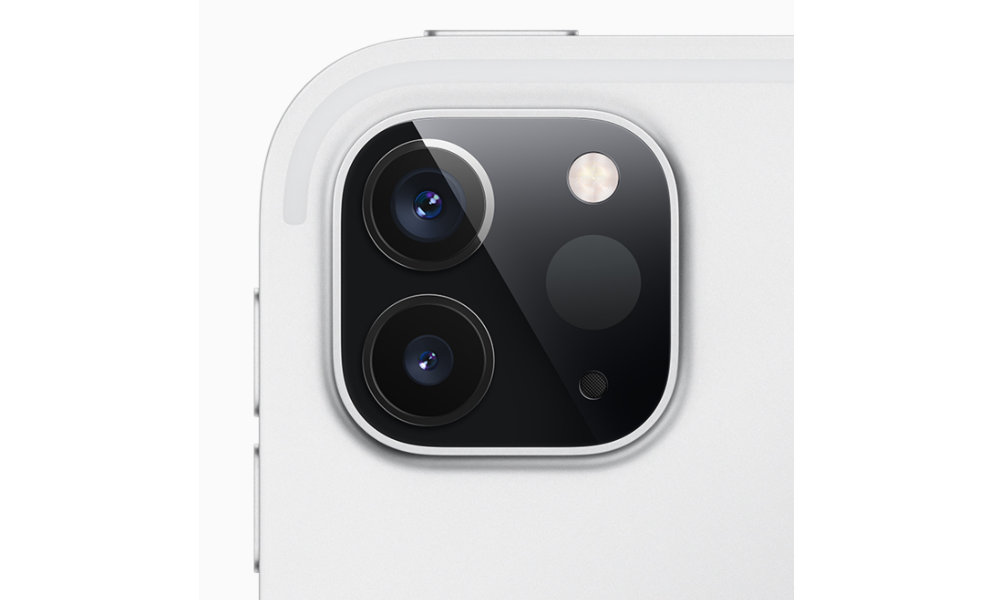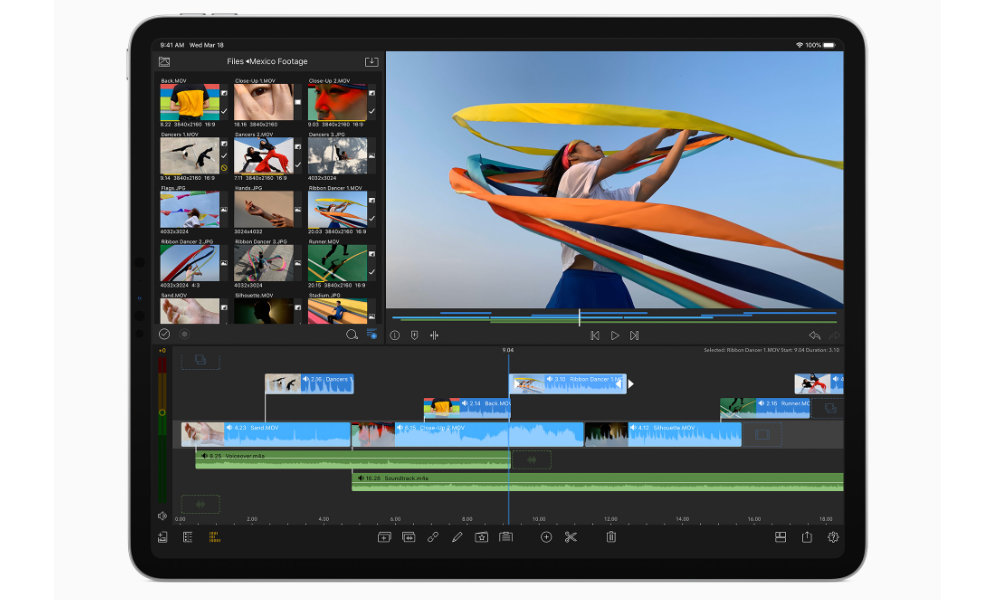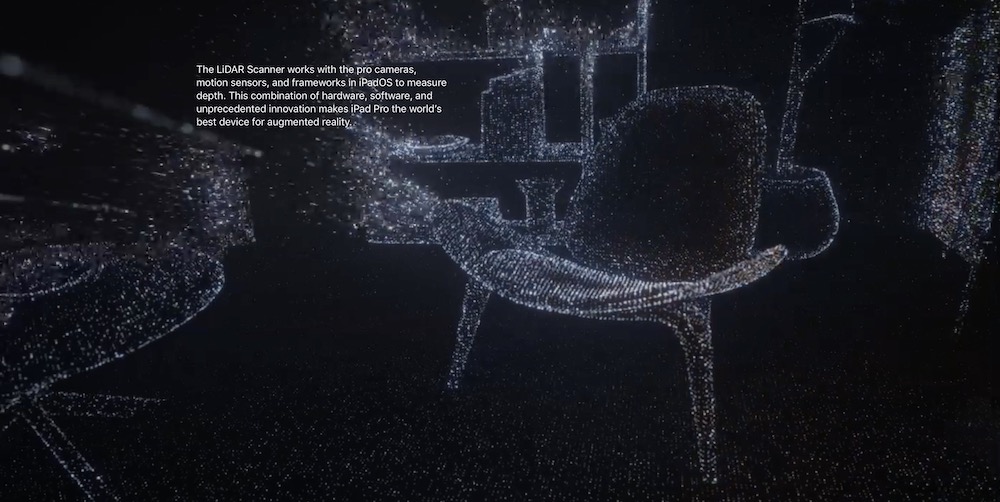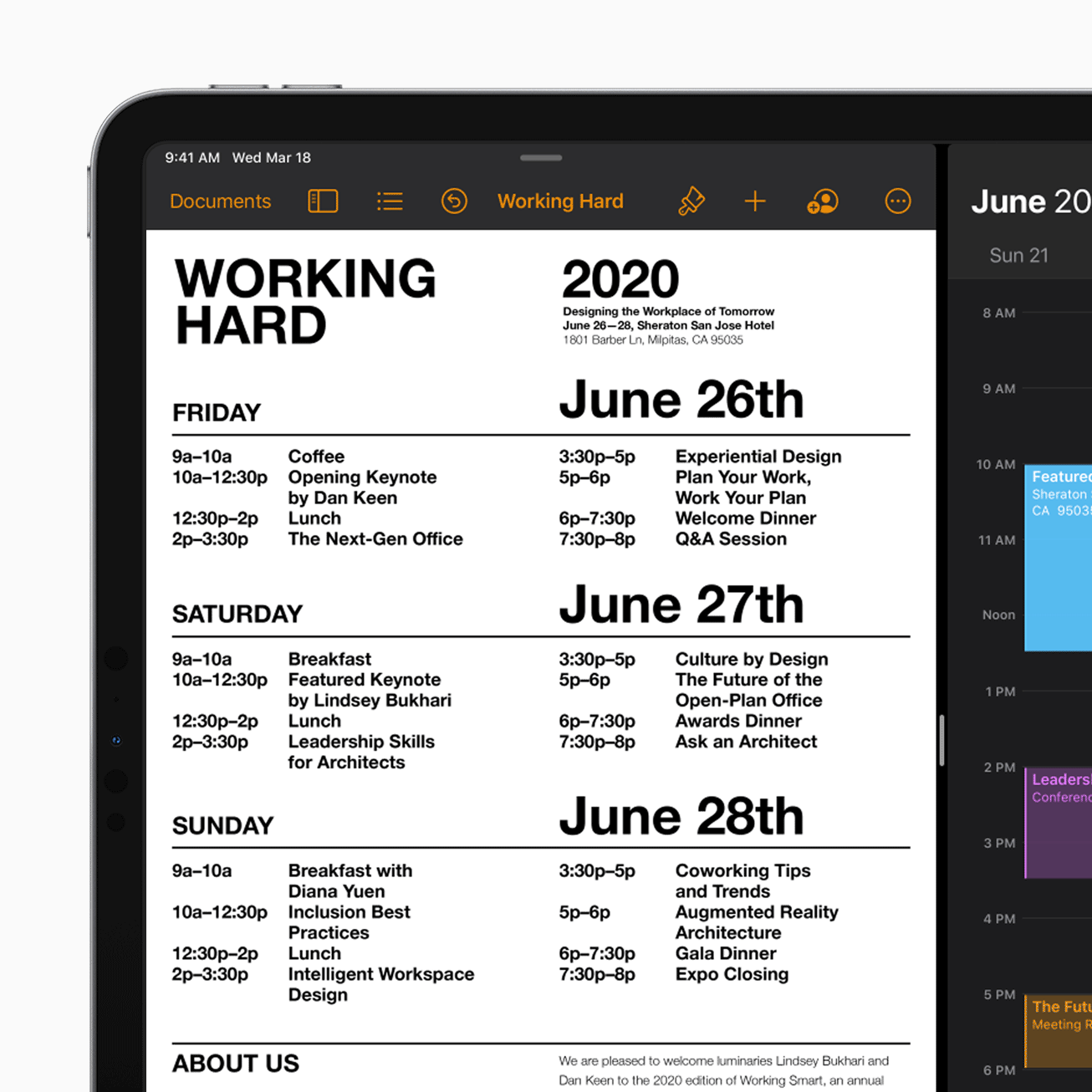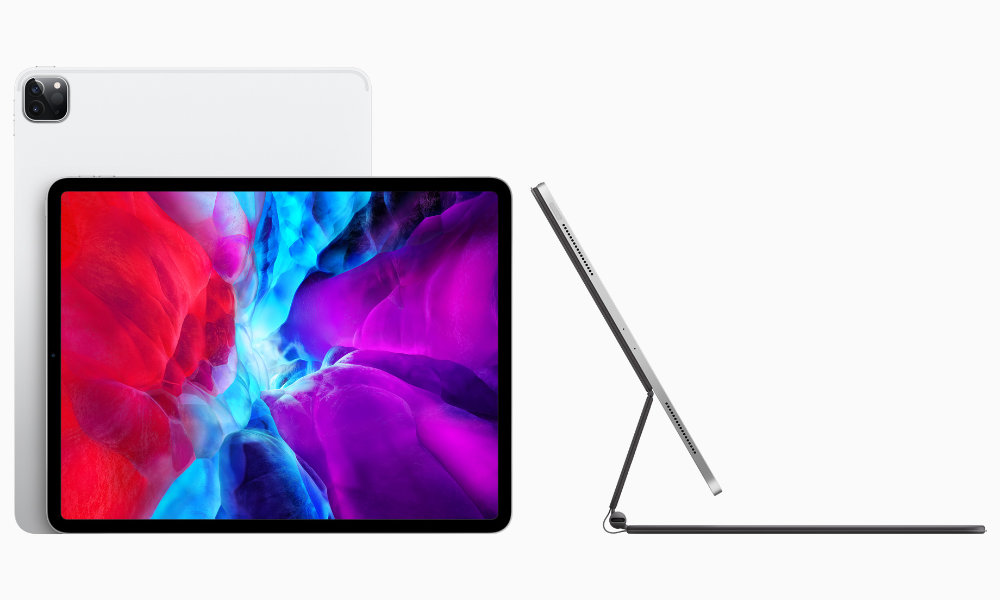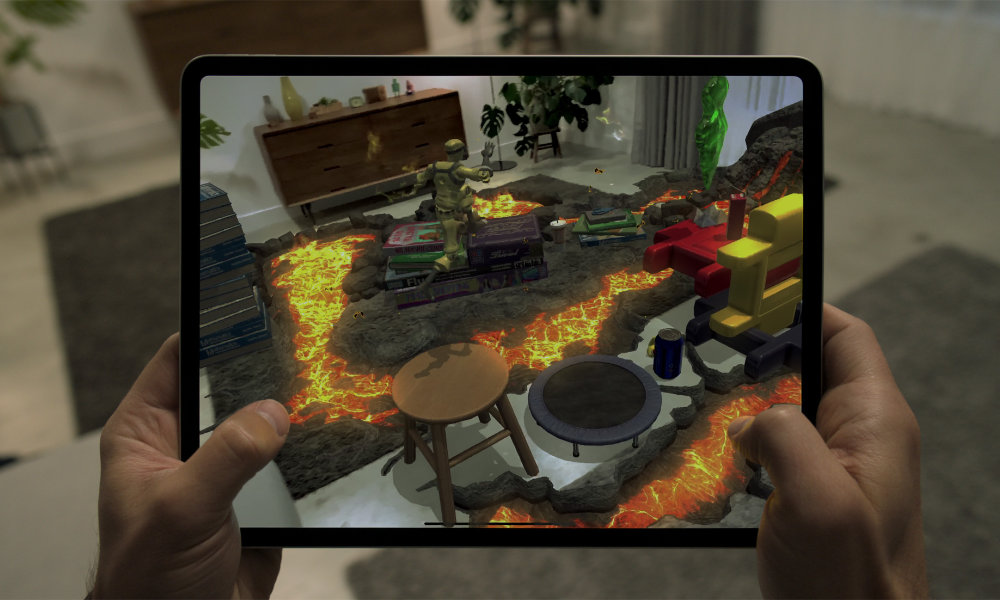Apple Announces New iPad Pro with LiDAR and Magic Keyboard with Trackpad — Here’s What’s New
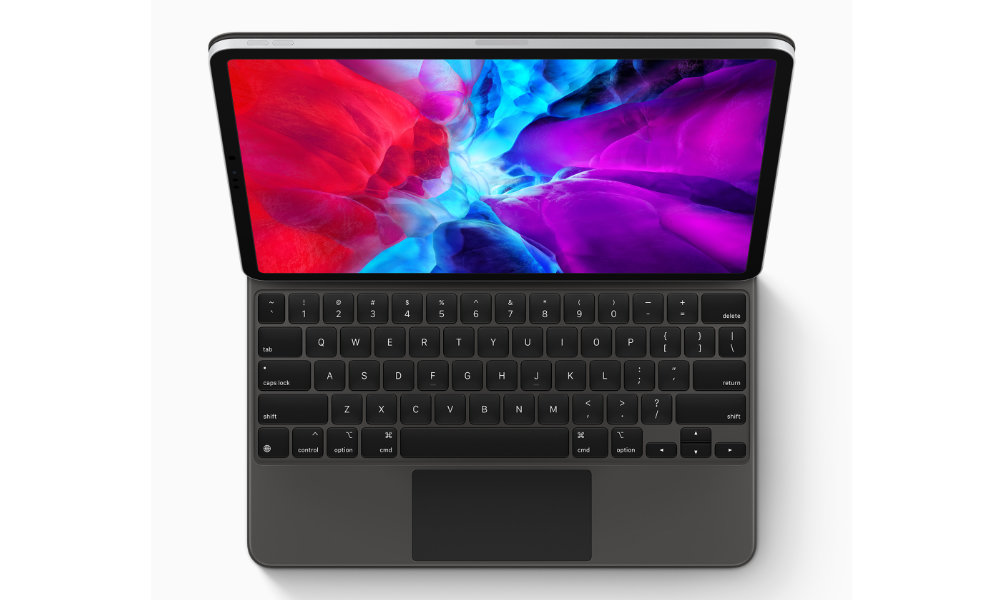 Credit: Apple
Credit: Apple
Now that Apple has cancelled its spring launch event, it seems that we won’t have to wait until the end of the month for the company’s big new product reveals, and only a day after Apple accidentally leaked new iPad models, they’ve now officially arrived.
Announced this morning via press release, the new iPad Pro models promise to be “faster and more powerful than most Windows PC laptops” and add several new interesting features that bring the iPad Pro more on-par with the current iPhone models, superseding them in some ways while also lagging behind in others. Read on to find out everything that’s new in Apple’s latest iPad Pro lineup.
The Cameras
One thing that’s a bit of a surprise if that the iPad Pro is actually not gaining the triple-lens camera system that has long been rumoured. Looking at the design, it’s easy to see how supply chain sources could have made this mistake, as it features the same camera bump as the iPhone 11 Pro, but it turns out that Apple has only added an Ultra Wide camera, bringing the iPad Pro roughly on par with the iPhone 11 in that regard.
Instead, the third part of the “triple-lens” design is actually reserved for a LiDAR scanner — something else we’ve been hearing about since last year, and while the same technology is rumoured to be coming to the iPhone 12 this year as well, clearly Apple has decided that the iPad Pro should be the first out of the gate with it. The new sensor will be capable of measuring the distance to objects up to 5 meters away, whether indoors or outdoors, enabling “a whole new class of AR experiences.”
It’s also worth noting that the Ultra Wide camera is only 10MP rather than 12MP, it probably won’t make that much of a difference in practical daily use, and much of the computational photography magic that the Ultra Wide camera is used for in the iPhone 11 can be better handled by the new LiDAR sensor.
The A12Z Bionic
Interestingly, rather than packing in the enhanced A13X chip that we would have expected, Apple is instead including an entirely new chip, the A12Z Bionic, which clearly iterates on the A12X found in the 2018 iPad Pro. The exact improvements aren’t entirely clear, but Apple promises that it will be able to handle “the most demanding tasks” including 4K video editing and 3D modelling, and notes that it includes an eight-core GPU and “enhanced thermal architecture and tuned performance controllers.” The A12Z also appears to feature new “computer vision algorithms” that have been specifically designed for the new LiDAR scanner.
It’s a pretty significant shift for Apple, which has traditionally included “X” versions of the same CPUs in its current iPhone models, so it will be interesting to see how its performance compares to the A13 in the iPhone 11 and iPhone 11 Pro.
The Augmented Reality
As previously noted, the new LiDAR Scanner promises some pretty big enhancements to ARKIt, and Apple has updated its Neural Engine and iPadOS to take advantage of this.
The built-in Measure app will become faster and more accurate, and will now offer a Ruler View for even more precise measurements.
Developers will also be able to take advantage of the new ARKit frameworks to instantly place objects in the real world with a degree of accuracy that simply wasn’t possible before.
The Trackpad
Last year, Apple added rudimentary mouse support to iPadOS 13, and we already heard rumours that it would be taking this to the next level in iOS 14, complete with a new iPad keyboard with trackpad, however it looks like we won’t have to wait until the fall.
iPadOS 13.4 will bring full trackpad support to the iPad, and not just as a kludgy accessibility improvement, but rather actual mouse-and-cursor style text selection and navigation. Apple will be updating its own iWork productivity suite of apps — Pages, Numbers, and Keynote — to take advantage of this right away, and of course developers will have access to the necessary APIs, so it wouldn’t surprise us to find out that companies like Microsoft are already working on adding this to Word, Excel, and Powerpoint on the iPad.
The Magic Keyboard
Back in 2018, Apple introduced a second-generation Apple Pencil for the iPad Pro, which will continue to be used with these newest models, but now it’s also naturally updating the Smart Keyboard Folio and calling it the new Magic Keyboard. The new keyboard includes the aforementioned trackpad, and will attach magnetically to the iPad Pro, but also for the first time it features a floating design to elevate the iPad Pro screen up above the keyboard, and let users adjust the viewing angle up to 130 degrees.
In addition to offering a full-sized keyboard, the keys are also backlit, and of course use Apple’s new scissor-switch mechanism. There’s also USB-C pass-through charging, which means that users can power the iPad Pro while keeping the main USB-C port free for other accessories.
The Pro Display
We’ve heard reports that Apple would be adding mini-LED panels to this year’s iPad Pro models, yet that doesn’t seem to have materialized. Instead, Apple is continuing to use the edge-to-edge Liquid Retina display, the same technology that it debuted on the iPhone XR and still uses on the iPhone 11.
So in other words, Apple hasn’t even yet switched to OLED for the iPad, much less mini-LED, although it’s undoubtedly made some minor improvements in the LCD display technology, and of course it still supports the ProMotion 120Hz refresh rate and True Tone technology.
While the reports of a switch to mini-LED suggested a fall release, it seems extremely unlikely that Apple will introduce new iPad Pro models with new display technology only six months from now, so we suspect we won’t see this until 2021.
The Price
The iPad Pro is available for pre-order today from the Apple Store . Rather ironically, Apple has announced that it will “be available in stores starting next week,” although that presumably only applies to China, since Apple has closed the rest of its stores worldwide in the midst of the COVID-19 crisis.
The new iPad Pro will be available in Space Gray and Silver and start at $799 for the 11-inch Wi-Fi model and $949 for the 11-inch Wi-Fi + Cellular version, while the 12.9-inch models will begin at $999 and $1,149, respectively.
The entry-level models will come with 128GB of storage, with 256GB, 512GB, and 1TB configurations available. A maxed-out 1TB Wi-Fi + Cellular 12.9-inch iPad Pro will run you $1,649.
The Magic Keyboard for iPad Pro won’t be arriving until May, at which point it will sell for $299 for the 11-inch iPad Pro and $349 for the 12.9-inch iPad Pro. The second-generation Apple Pencil remains available for $129, and Apple will also continue selling the Smart Keyboard Folio for the new iPad Pro for $179 and $199, for the 11-inch and 12.9-inch models, respectively.
What about 5G?
One thing that’s conspicuously missing from today’s announcement is 5G support, which we had previously heard might be coming to the iPad Pro this year. There’s no mention of this at all on the cellular-capable iPad Pro models, which presumably still sport the same LTE technology as the prior versions.
That said, it’s not at all outside the realm of possibility that we could still see 5G iPad Pros later this year. We’ve already heard reports that the 5G iPad Pro wasn’t launching at all until this fall, and while it’s extremely unlikely that Apple will release another big update, it could quietly refresh these new iPad Pros to add 5G support when it debuts the 5G-capable iPhone 12. So if you’re looking to buy a cellular iPad Pro and really want 5G, it might be worth waiting to see what comes next, but if you’re content with the Wi-Fi or LTE models, it’s very unlikely they’ll see any other updates before 2021.

